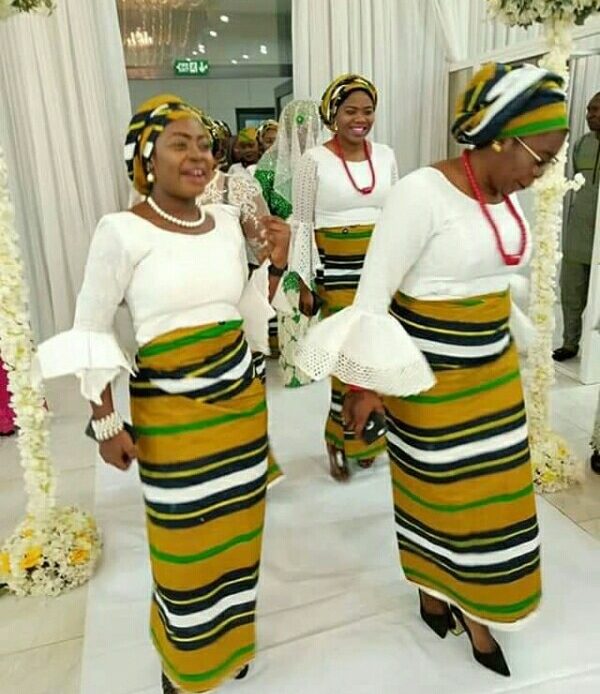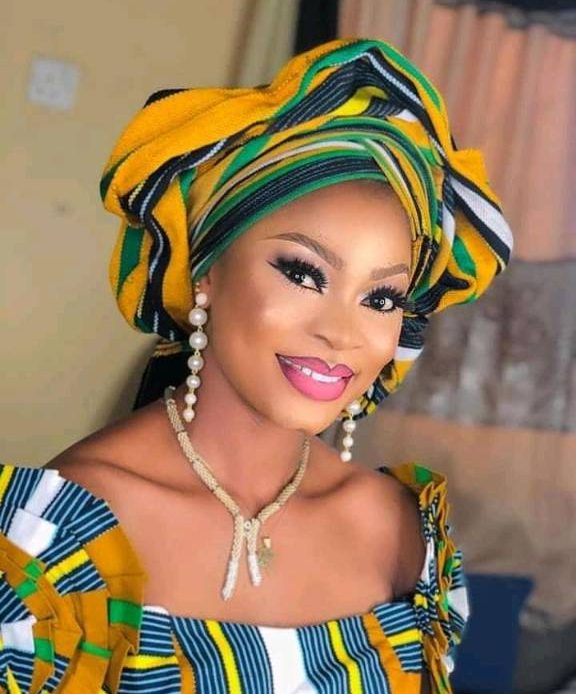Igala Achi

Nigeria as an ethnically diverse state boasts of an estimate of 206 million population spread across over 250 ethnic groups, with about 520 languages. Amazingly, each tribe is proudly associated with different cultural ethics, dressing, and a unique way of life that just sets them apart from other tribes. On today’s Saturday small chops, we will be sharing knowledge on the Amazing people of Igala kingdom and their beautiful Igala Achi, the popular traditional attire of the Igala people.

Igala is one of the five main ethnic groups in Kogi State, northcentral Nigeria, which also includes Ebira, Bassa, Nge and Okun. With an estimate of 4 million, Igala people are spread across different states in Nigeria. Igala people, who share history with some tribes in western Nigeria received their name ‘Igala’ from the Yoruba tribe, which means Antelope. In recent times, Igala people are mostly found in Benue, Adamawa, Nassarawa, Enugu, Anambra, Delta and Edo States.
Igala people, blessed with a refined cultural background take pride in their cultures and traditions, one of which is their fascinating traditional attire popularly called Igala Achi or Igala Ankara.

Igala Achi or Igala Ankara is an elegant material with a texture similar to the Yoruba Aso Oke. The material is designed with two predominant colours which are – yellow and black. The material could also include navy blue(rarely), white and green stripes which fully complements the major colours, giving it an elaborate look.
The colours are not only for beautifications but have deep cultural significances. The black and yellow colours are very peculiar to the history of the Igala Kingdom. The black, which portrays the richness embedded in Igala land is symbolic to the minerals, crude oil and fertility of the land. It also translates to the wealth and prosperity of the Igala people. Yellow on the other hand symbolizes the hospitality of Igala people and signifies gold, which poses as a mark of prosperity and richness. The green and white, which is peculiar to the African continent as a whole represent peace and harmony.

Igala Achi is worn generally by the people of Kogi State, irrespective of tribe and it is the dominant ceremonial outfit worn by the Igala speaking towns of Kogi State which include Idah, Ibaji, Igalamela-Odolu, Olamaboro, Ankpa, Dekina, Ofu and more. The use of the Igala Achi/traditional outfit could range from weddings to burial ceremonies, birthdays, traditional festivals, annual youth celebration and even for special church ceremonies.
Read Also: Aso-Oke
The material is mostly transformed into beautiful styles both for male and females. Since the Kogi people are known to be talented fashion designers, Igala Achi has recently been designed into many beautiful styles. Although traditionally, it could be worn as a wrapper by women and female children, with a nicely made headgear from the same material, adorable styles have been sighted severally on brides and female party enthusiasts.

For men, the traditional fabric is made into Achi, a traditional cap of the Igala people and a scarf which is usually hung around their neck and rocked with different white material made into suitable pants and short-sleeved/long-sleeved T-shirts.
The fabric is usually woven, well-knitted, colourful and is largely in vogue in Kogi state. The beauty of the Igala Achi is seen on how it projects the elegance of wearers, especially of the bride and groom in a traditional wedding ceremony.
Interestingly, Achi is affordable, simple and easy to wash. In wedding ceremonies, parents of the couple wear the ankara to complement the physical aesthetics and to also portray the richness of the Igala culture. The male cap and female headgear are also designed from the fabric to provide balance to the outfit. The outfit could be further complemented with beads and jewellery to enable a more elegant and colourful look.
Have you ever seen the Igala Achi fabric? Tell us what styles suits it best.
